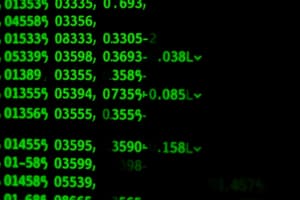Podcast
Questions and Answers
What type of data does an array store?
What type of data does an array store?
- Infinite data
- Dynamic data
- Heterogeneous data
- Homogeneous data (correct)
How is an array declared in programming?
How is an array declared in programming?
- type arrayName { arraySize };
- type arrayName [ arraySize ]; (correct)
- arrayName[type](arraySize);
- arrayName type[arraySize];
Which of the following is NOT a characteristic of an array?
Which of the following is NOT a characteristic of an array?
- It stores data sequentially in memory
- It is a container of data
- It can hold infinite elements (correct)
- It must store data of the same type
What is meant by dynamic array initialization?
What is meant by dynamic array initialization?
Which of the following is an example of static array initialization?
Which of the following is an example of static array initialization?
What is the correct way to access the first element of an array named 'myArray'?
What is the correct way to access the first element of an array named 'myArray'?
Which of these statements about arrays is true?
Which of these statements about arrays is true?
What must be done after declaring an array?
What must be done after declaring an array?
What is the primary advantage of using arrays in programming?
What is the primary advantage of using arrays in programming?
Which of the following is NOT a disadvantage of using arrays?
Which of the following is NOT a disadvantage of using arrays?
How is a one-dimensional array defined in C?
How is a one-dimensional array defined in C?
What is the index of the last element in an array of size 10?
What is the index of the last element in an array of size 10?
What does the term 'lower bound' refer to in the context of arrays?
What does the term 'lower bound' refer to in the context of arrays?
What happens when you try to access an index outside the bounds of an array?
What happens when you try to access an index outside the bounds of an array?
Which type of array allows for multiple dimensions?
Which type of array allows for multiple dimensions?
When managing memory allocation in arrays, which operation can be considered costly?
When managing memory allocation in arrays, which operation can be considered costly?
What is the primary purpose of the code presented in the main function?
What is the primary purpose of the code presented in the main function?
Which statement about accessing elements in an array is correct?
Which statement about accessing elements in an array is correct?
What does a two-dimensional array in C represent?
What does a two-dimensional array in C represent?
In the given C program, what is the result of a[i+j] when i=0 and j=2?
In the given C program, what is the result of a[i+j] when i=0 and j=2?
What is the correct syntax to declare a two-dimensional array with three rows and four columns?
What is the correct syntax to declare a two-dimensional array with three rows and four columns?
Which operation cannot be directly performed on arrays in the given content?
Which operation cannot be directly performed on arrays in the given content?
What is the proper way to initialize a two-dimensional array in C?
What is the proper way to initialize a two-dimensional array in C?
Which operation can not be directly observed from the example given?
Which operation can not be directly observed from the example given?
Flashcards
Array
Array
A collection of data items of the same type, accessed using a common name. It's a data structure holding a finite, sequential collection of homogeneous data.
Array - Homogeneous Data
Array - Homogeneous Data
All elements within an array must be of the same data type.
Array - Finite size
Array - Finite size
An array holds a fixed number of elements defined before use. The size is known at compile time.
Array Declaration
Array Declaration
Signup and view all the flashcards
Static Initialization
Static Initialization
Signup and view all the flashcards
Dynamic Initialization
Dynamic Initialization
Signup and view all the flashcards
Array Element
Array Element
Signup and view all the flashcards
Array - Structure
Array - Structure
Signup and view all the flashcards
Array Declaration Syntax
Array Declaration Syntax
Signup and view all the flashcards
Array Element Access
Array Element Access
Signup and view all the flashcards
Array Element Index
Array Element Index
Signup and view all the flashcards
Dynamic Array Initialization
Dynamic Array Initialization
Signup and view all the flashcards
One-dimensional Array
One-dimensional Array
Signup and view all the flashcards
Advantages of Arrays
Advantages of Arrays
Signup and view all the flashcards
Disadvantages of Arrays
Disadvantages of Arrays
Signup and view all the flashcards
Why is array index 0?
Why is array index 0?
Signup and view all the flashcards
Accessing Array Elements
Accessing Array Elements
Signup and view all the flashcards
Array Index
Array Index
Signup and view all the flashcards
How to Input Array Elements?
How to Input Array Elements?
Signup and view all the flashcards
Printing Array Elements
Printing Array Elements
Signup and view all the flashcards
Declaring a Two-Dimensional Array
Declaring a Two-Dimensional Array
Signup and view all the flashcards
Two-Dimensional Array Initialization
Two-Dimensional Array Initialization
Signup and view all the flashcards
Two-Dimensional Array - Example
Two-Dimensional Array - Example
Signup and view all the flashcards
Study Notes
Computer Programming - Arrays and Strings
- Arrays are collections of data items of the same type, accessed by a common name.
- Arrays hold a finite, sequential collection of homogeneous data.
- Arrays are containers holding collections of data.
- Array size is fixed before use.
- Arrays store data sequentially in memory.
- Array elements must share the same data type.
Examples of Array Usage
- Customer lists with phone numbers
- Daily rainfall tables
- Employee lists in an organization
- Student test scores
Array Structure
- Arrays have elements starting from index 0.
- The index of the last element is one less than the array size.
- The first index is known as the lower bound.
- The last index is known as the upper bound.
Declaring Arrays
- Array variables are declared like other variables, with an added pair of square brackets specifying the size.
- Syntax:
type arrayName[size];(e.g.,int group[10];)
Initializing Arrays
- Static initialization: All elements' values are defined during declaration with curly braces and commas.
- Example:
int marks[5] = {90, 86, 89, 76, 91};
- Example:
- Dynamic initialization: Elements are assigned values during program execution.
- Example:
scanf("%d", &arr[i]);
- Example:
Advantages of Arrays
- Efficient use of memory.
- Easy access to elements using indexing.
- Simple traversal using loops.
- Relatively easy to sort.
- Uses less code than other methods.
Disadvantages of Arrays
- Insertion and deletion can be expensive due to memory reallocation needs.
- Fixed size restricts the amount of data at declaration time..
- Arrays are not dynamic, unlike linked lists.
Types of Arrays
- One-dimensional (single)
- Two-dimensional
- Multidimensional
One-Dimensional Arrays
- Elements are stored sequentially, like a row.
- Syntax:
datatype array_name[size]
Accessing Array Elements
- Elements are accessed using their index, inside square brackets.
- Index starts from 0.
Matrix Operations
- Matrices store data in rows and columns.
- Basic matrix operations include addition, subtraction, and multiplication.
- Matrix multiplication is common in programs.
Matrix Initialization
- Two Methods: Direct initialization at declaration or assigning values individually.
Matrix Accessing
- Elements within a matrix can be accessed by specifying row and column indices.
Programs for Array, Matrix Operations
- Programs demonstrating various functions are present in the slides.
Strings
- Strings are sequences of characters treated as a single data item.
- Strings are enclosed in double quotes. ("...")
String Declaration
- String declaration mirrors array declaration.
- Syntax:
char stringName[size];
String Initialization
- String initialization values end with '\0' (null character)—additional characters will be ignored.
Reading Strings
- The
%sformat specifier is used to read strings.
Assigning Values to Strings
- String variables cannot be assigned directly after declaration.
String Handling Functions
- C has various functions (e.g.,
strlen,strcpy,strcmp,strcat,strrev,strlwr,strupr,strstr) to manipulate strings. - These functions are found in the
string.hheader file. These functions need to be included in your programs to utilize their functionality.
Example Programs and Functionalities (in code style)
- Example shows common tasks and their respective syntaxes/functions (e.g., length calculation, copying, concatenation).
Studying That Suits You
Use AI to generate personalized quizzes and flashcards to suit your learning preferences.




